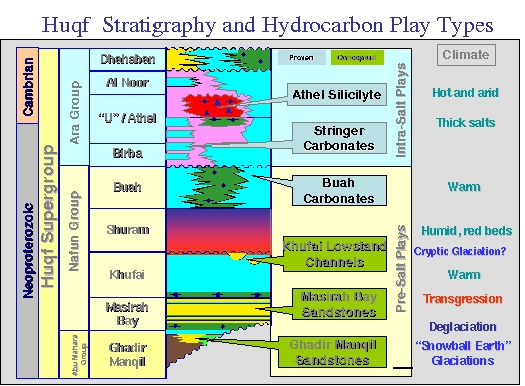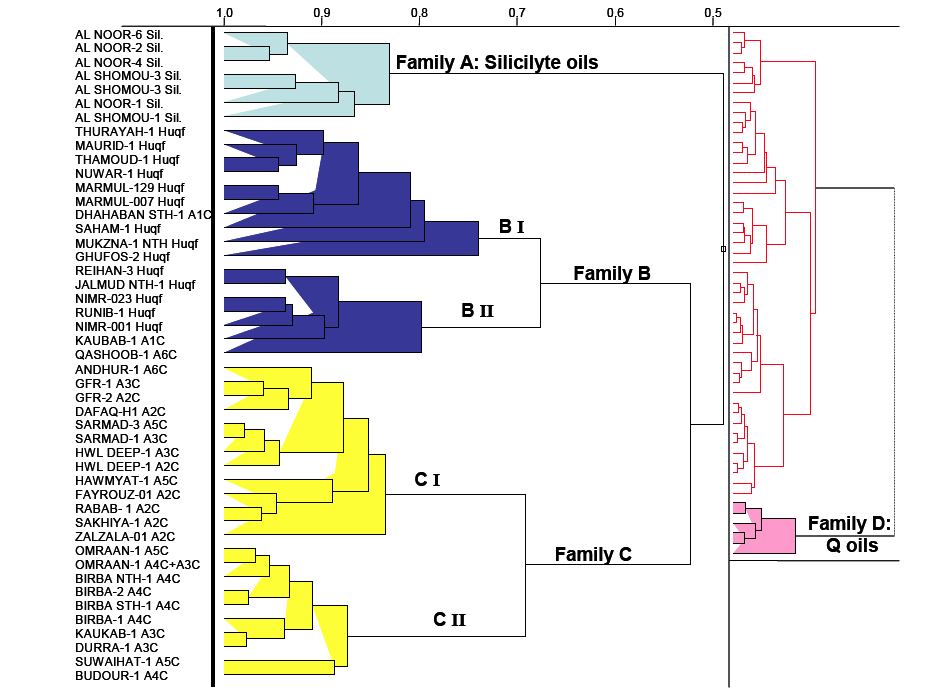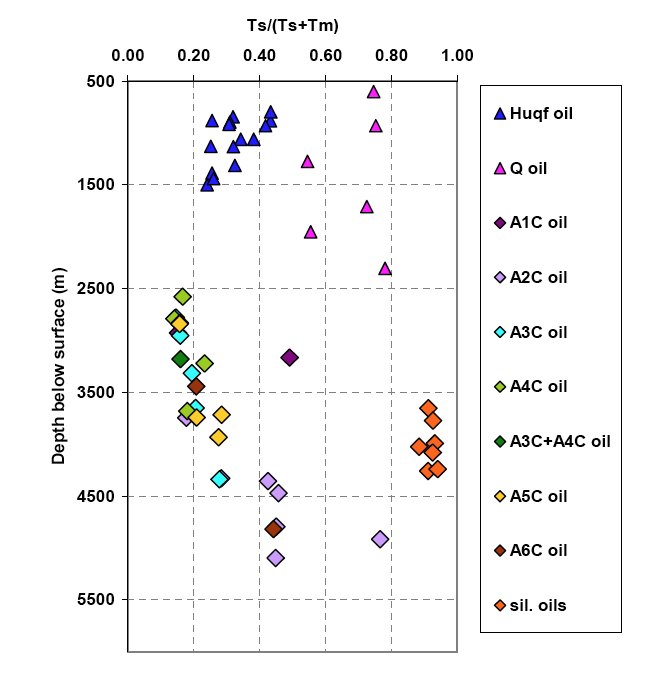The South Oman Salt Basin (map of Oman, map of basin) is host to the worlds oldest known commercial deposits of petroleum. The organic rich rocks from which they arise were deposited sometime following the last of the “Snowball Earth” episodes of extreme climate and display many interesting geochemical features that appear to be of global occurrence. The unusual abundances of organic compounds such as steroids may reflect rapid evolution of complex organisms in the period just prior to the start of the Cambrian animal radiation approximately 542 million years ago. This period of Earth history also saw dramatic environmental change including a rise in the concentration of atmospheric oxygen and ventilation of the deep ocean for the first time. The abundance of oxygen and wide distribution of oxygenated waters created the environments necessary for the radiation of motile animals. There was also a reorganization of the biogeochemical cycles of carbon, sulfur and oxygen.
Lab members are currently engaged in a high resolution chemostratigraphic analysis of sediments through the sequence of Thuleilat Fm-Athel Silicilyte-U Shale in order to try to understand the biogeochemical processes leading to silicilyte deposition and biosignature preservation.
We are also contributing to analyses of samples from the SOSB pertinent to testing the sponge biomarker hypothesis. We have also written about that work herefor EAPS News.

CalTech Professor John Grotzinger in his element

Petroleum prospectivity in Oman could be improved if we were able to:
- Enhance correlation between organic rich rocks and reservoir fluids
- Establish a detailed chemostratigraphy of biomarkers and individual compound isotopic compositions through organic rich intervals and analysis of these attributes in petroleum samples
- Establish a useful scheme for temporal and spatial correlation of reservoir and source rock intervals
These objectives are being addressed by integration of chemostratigraphies (del13Ccarb, del18Ocarb + del34Scarb + trace elements) and (δ13Corg and δ13Cbiomarkers) with absolute ages based on U-Pb zircon geochronology of ash beds and detrital zircons.
Calibration of biogeochemical and tectonic events in absolute time will provide a more rigorous framework for basin tectonic models and improved understanding of the petroleum systems.

High fidelity GC-MS-MS analysis and statistical treatment of the resultant data, has enabled us to delineate four discrete oil families in the South Oman Salt Basin. These families correlate strongly with the geographic and stratigraphic placement.

In the case of the Silicilyte oils (Family A) and the carbonate-hosted oils (Family C) their maturity levels correlate strongly with present day burial depth allowing us to infer that their oils are in situ in their host source rocks. In contrast, the maturity of Huqf and Q oils shows no correlation with present-day burial depth confirming that they have migrated, perhaps over long distances.
Further reading:
- Grosjean E., Love G. D., Stalvies C., Fike D.A. and Summons R.E., 2009. Origin of petroleum in the Neoproterozoic-Cambrian South Oman Salt Basin. Organic Geochemistry 40, 87–110.
- Love G.D., Grosjean E., Stalvies C., Fike D.A., Bradley A.S., Bhatia M., Meredith W., Snape C.E., Bowring S.A., Condon D.J., Grotzinger J.P. and Summons R.E., 2009. Molecular fossil evidence for the appearance of Demosponges during the Cryogenian Period. Nature 457, 718-722.
- Amthor J.E., Grotzinger J.P., Schroer S., Bowring S.A., Ramezani J., Martin M.W. and Matter A. (2003) Extinction of Cloudina and Namacalathus at the Precambrian-Cambrian boundary in Oman Geology 31: 431-434.
- Grantham P. J. (1986) The occurrence of unusual C27 and C29 sterane predominances in two types of Oman crude oil. Organic Geochemistry 9: 1-10.
- Grantham P. J., Limjbach G. W. M., Posthuma J., Clarke M. W. H., and Willink R. J. (1987) Origin of crude oils in Oman. Journal of Petroleum Geology 11: 61-80.
- Hod I. M., Schouten S., Jelleman J., and Sinninghe Damste J. S. (1999) Origin of free and bound mid-chain methyl alkanes in oils, bitumens and kerogens of the marine, Infracambrian Huqf Formation (Oman). Organic Geochemistry 30:1411-1428.
- Terken J. M. J., Frewin N. L., and Indrelid S. L. (2001) Petroleum systems of Oman: Charge timing and risks. AAPG Bulletin 85(10): 1817-1845.


